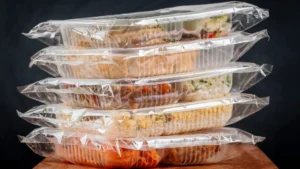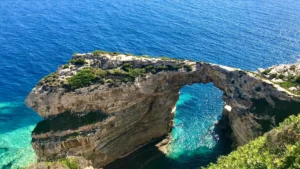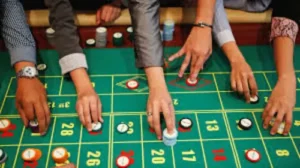Vietnam tourism policy is geared towards promoting its abundantly available nature (N) and culture (C) products, next to increasingly more developed and accessible beach (P) facilities. Not counting backpackers who travel the country extensively and have time aplenty, due to the shape of the county and long distances between major tourist attractions, the average overseas leisure tourist follows a rather fixed itinerary. With an average stay of 9 days this includes the so called “Big 5”, and – when time permits – either a northern and/or a southern extension. So, when soft adventure is at stake, for a tourist on holidays the adventurous part should take place in the vicinity of those 7 top tourism destinations; i.e. the big five, Hanoi, Ha Long Bay, Hue, Hoi An and Ho Chi Minh City (formerly Saigon); Sapa (northern circuit) and the Mekong Delta (southern circuit).
So, let’s see what’s there to do in each of those seven, highly regarded, tourism destinations.
SAPA (N + C)
World class trekking through pristine nature with impressive rice field terraces and encounters with one or more of the five minority groups living there (H’mong, Dao, Tay, Day and Xa Pho).
For those who believe that Sapa and surrounds is to tame, may be a one or two days trek up to the top of Fansipan Mountain is what could trigger them. With a height of 3,143m the highest in Vietnam and conveniently located in the northern Lao Cai province, it’s not far from Sapa. It’s a mild climbing experience for anyone with a normal physical condition. Nonetheless, one should hurry up since currently the World’s longest three-rope cable car system is being built, connecting Sapa with the peak. The system, with a maximum carrying capacity of 2,000 passengers per hour will transport tourists from the base of the mountain to VN’s highest point within 15 to 20 minutes. It’s expected to be opened on Independence Day 2015 (September 2). Thus, be forewarned, it could become a bit crowded at the top in the near future.
HANOI (C)
The green capital with many lakes to unwind and ample street life offers a rich variety of tourist attractions beyond the scope of this article. However, as part of soft adventure activities cycling within the city (a hellish experience to share with Hanoi’s 3 million motorbikes) or over its outer dykes (a more rewarding happening) should be mentioned, as well as a round of Golf at Hanoi’s King’s Island Golf course in Tay Ha district. The district is part of Hanoi since the enlargement of its borders in 2008, though still about 1hr drive from its downtown business district; the former province also houses the renowned Perfume Pagoda, one of the oldest of the country. The trip to it in itself could be considered soft adventure, with bus and small boat transport and ensuing vigorous hike up and down the hills.
HA LONG BAY (N)
World Heritage Site and one of the newly proclaimed 7 World Wonders, Ha Long Bay hardly needs further introduction. I don’t know of anyone, tourists, expats and locals alike, who doesn’t come back from the fairytale overnight trip on its waters spellbound. To make it even more alluring, spend some time Kayaking or go on a Trek in much less visited Cat Ba National Park, the main island in the vast bay.
HUE (C + B)
The Imperial City, with traditional, centuries old garden houses and majestic palaces, but in terms of the article’s subject, how about an adventurous side trip to nearby Quang Binh province, where less than 25 years ago the World’s largest cave was discovered. The Son Dong cave belongs to the World Heritage Site Phong Nha –Ke Bang and was first explored in 2009, only. It is more than 200m wide, 150m high, and approximately 9km long. It has a jungle and a river within its boundaries, and could fit a 40-storey sky scraper within it walls. BBC News selected it as one of the most beautiful in the world. Only a couple of years open to tourists you will be one of the few to have marveled at and in it. Another outing would be to cycle to quite a pretty, very quiet beach devoid of noisy enterprises, some 15 km from town (Thuan An beach).
HOI AN (C + B)
Two more Cultural World Heritage Sites, Hoi An, former port and trading city itself, and nearby My Son, the archeological site of a Cham city. Decimated by the Americans during the war; still impressive though and related to fabulous Angkor Wat in Cambodia.
Lots of soft adventure on offer, from riding the waves in basket-boats and cycling along the paddy fields to diving at Cham Island (opposite Hoi An) and trekking in beautiful Bach Ma National Park, gradually restoring from the aftermath of defoliage. Surfing can be done at China Beach (running from Danang to Hoi An).
HO CHI MINH CITY (C)
Still better known as Saigon, it is Vietnam’s most cosmopolitan city, worthwhile to browse around for a few days, with numerous cultural and entertainment opportunities at hand. Seize this opportunity to get acquainted with one of the most fascinating sports, Martial Arts, an important part of Vietnamese cultural and social fabric. You can watch it for free in some of the parks in the Cho Lon district (more commonly referred to as Chinatown), but there are also various places where classes are given.
MEKONG DELTA (N + C)
The mighty Delta, the rice basket of Vietnam, is a heaven for those who like to experience rural, tropical Vietnam and its ancient ways of life. Filled with paddy fields, orchards and a labyrinth of rivers, it’s abundant in fruit, vegetables, fish and tourist attractions: floating markets, colourful fishing boats, floating houses, river bank villages, pagoda’s and much more. Without a cruise by an old-fashioned Junk it’s rather difficult to grasp the vibrant river life, though the more adventurous might prefer to do the same in a simple Pirogue. Cycling through the flat Delta bed is another recommendable activity. Once the sun, the smells, the breeze, the colours and senses are satisfied, there’s always the possibility to escape the overwhelming nature by extending your trip with a lazy stay on nearby Phu Quoc island (Vietnam’s largest) to unwind.
Please not that an ideal period to travel for those coming from lesser blessed climes are the months of November and April, especially in the north, when temperatures drop to levels only experienced in your home country during a record summer.







